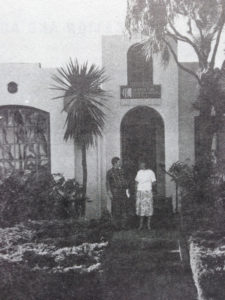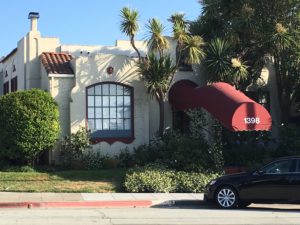
The concept of a center where distinguished psychologists, psychiatrists, and others in related disciplines could join with graduate students in the pursuit of knowledge was first envisioned by Margaret Spurrier Alafi in 1974. Over the next five years, Dr. Alafi sought and received assistance from numerous psychologists, educators, and others who were experienced in education, research, and treatment. Pivotal among these were E. Mavis Hetherington, who later served as the school’s liaison with the Department of Education, and subsequently on the Board of Directors, and Allen Fuhrman, who later served as the school’s first President. Since Drs. Fuhrman and Alafi had both attended the University of Chicago, they shared a model of a challenging curriculum introduced through informal relationships between faculty and students in small seminars. Their hope was to implement this model in a new school.
In addition to offering a clinical program, it was decided that the Center should also build a strong developmental and educational psychology program, anticipating that such programs could be facilitated through sharing the building housing the Twin Pines Day School in Oakland. Twin Pines was an independent alternative grade school that had been founded by Dr. Alafi in 1956 and which had continued under her leadership. It was proposed that teachers, parents, and children could avail themselves of professional assessment and counseling while graduate students and school faculty could find a readily accessible population for observation and research.
The Center opened its doors to students in the fall of 1979 under its corporate name of the Graduate School of Human Behavior.
 When Twin Pines School closed in the summer of 1983, the Graduate School of Human Behavior moved to Berkeley and continued under a new name, the Center for Psychological Studies. As the demographics of the community changed, student and faculty interests began to encompass such areas as adult development, family relationships, and organizational psychology.
When Twin Pines School closed in the summer of 1983, the Graduate School of Human Behavior moved to Berkeley and continued under a new name, the Center for Psychological Studies. As the demographics of the community changed, student and faculty interests began to encompass such areas as adult development, family relationships, and organizational psychology.
By 1985, increases in students and faculty and the development of programming and learning facilities mandated expanding into larger quarters. Consequently, the Center moved to 1307 Solano Avenue in Albany, CA. As the Center’s student body and faculty continued to grow, the school again found it necessary to relocate. In the spring of 1989, the Center moved to 1398 Solano Avenue in Albany, CA. Facilities included classrooms, faculty offices, a student lounge, a library, and an assessment library.
CPS continued to flourish through the first decade of the 2000s. During that time, the State of California’s Bureau for Private Postsecondary and Vocational Education (BPPVE) had ceased to operate and all approved schools and institutions, including CPS, had entered a sunset period. The state regulatory bureau was reconstituted as the Bureau for Private Postsecondary Education (BPPE) on 1 January 2010. CPS was notified that “Any changes that were made during the Bureau’s sunset period are approved to continue, but an application was required to be submitted by August 1, 2010.”
On 29 September 2014, the State of California signed into law Senate Bill 1247 (Chapter 840, Statutes of 2014). As a result of this legislation, all degree granting institutions governed by the California Private Postsecondary Education Act of 2009 were required to become accredited. Given this major change in regulations to operate, the CPS Board of Directors decided to not seek accreditation, in effect electing to discontinue the degree programs offered.